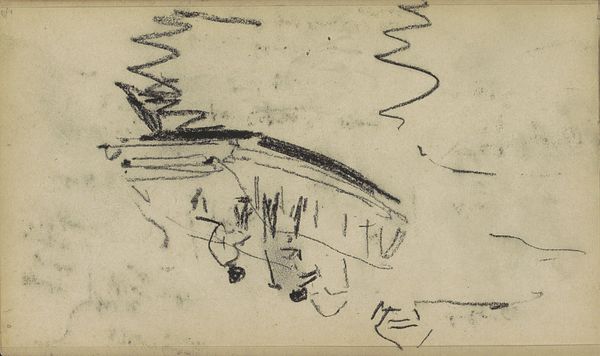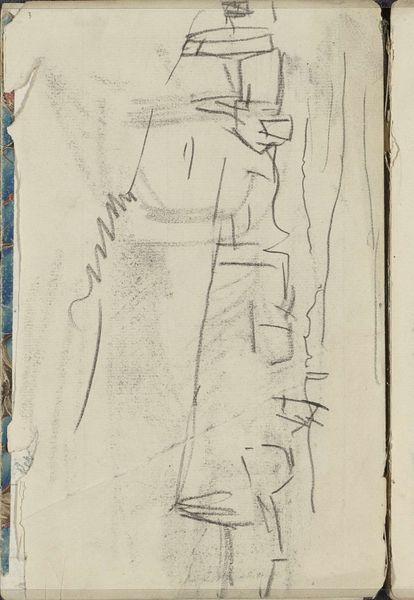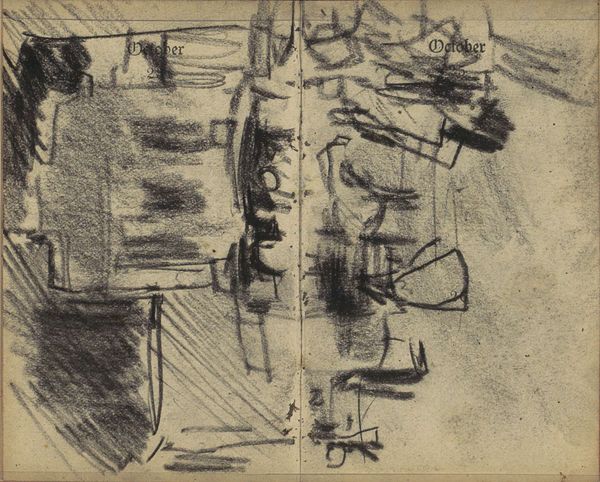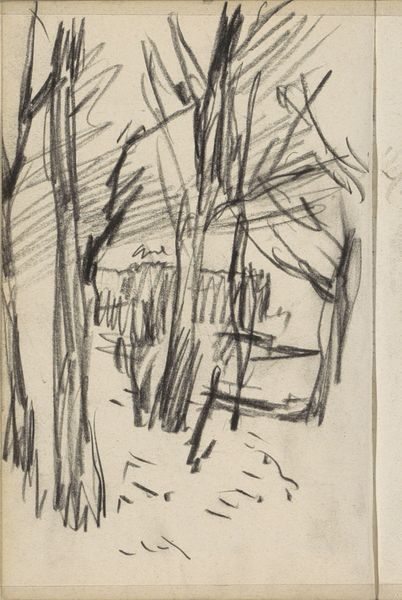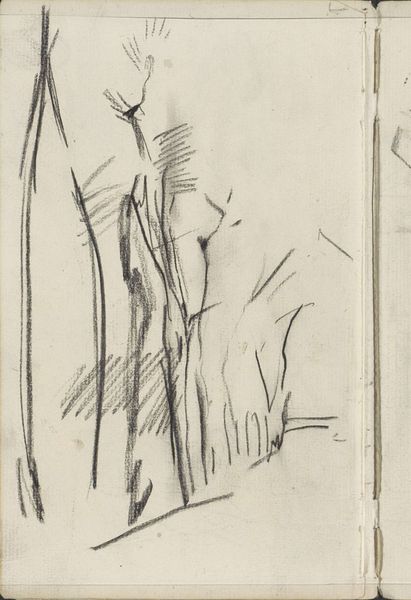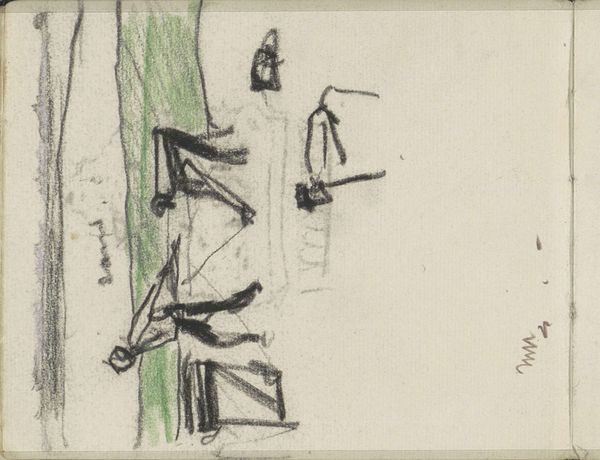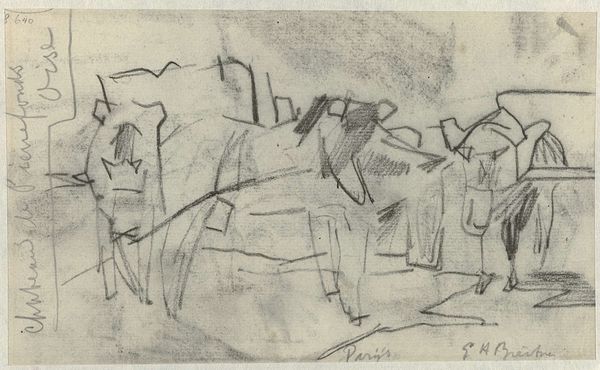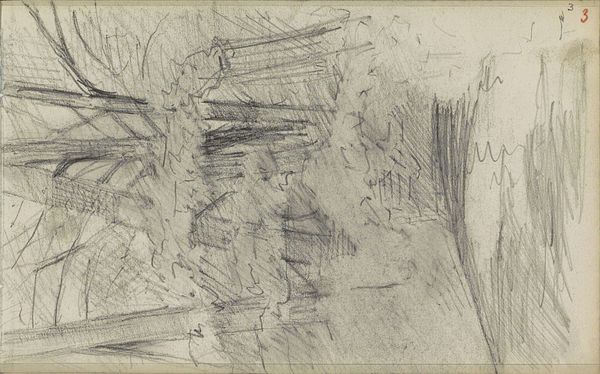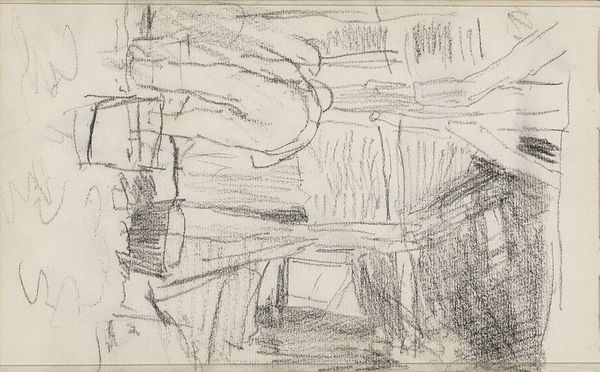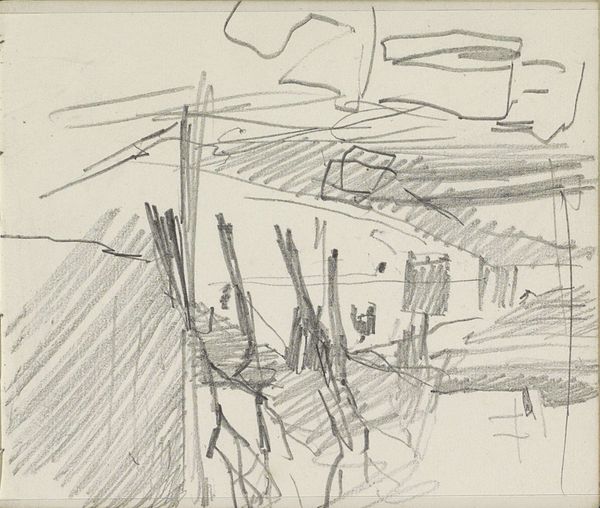
Gezicht op de Nieuwe Kerk te Amsterdam bij avond c. 1886 - 1903
0:00
0:00
georgehendrikbreitner
Rijksmuseum
Copyright: Rijks Museum: Open Domain
Curator: "Gezicht op de Nieuwe Kerk te Amsterdam bij avond," a cityscape by George Hendrik Breitner, created between 1886 and 1903 using drawing, graphite, and ink. It’s currently held at the Rijksmuseum. This sketch really captures a specific mood for me. Editor: It’s fascinating how a few lines can evoke such a strong sense of place and atmosphere! What do you see in this piece, beyond just a preliminary sketch? Curator: For me, this isn't just about architectural representation; it’s a social commentary, a snapshot of Amsterdam's evolving urban landscape during a period of intense social and political change. Consider the late 19th century, a time of rapid industrialization and urbanization that dramatically reshaped cities. What feelings do the stark contrasts and sketchy quality of the lines evoke in you? Do they tell a story about who gets to represent and inhabit these urban spaces? Editor: That’s a perspective I hadn’t considered! The starkness and the incompleteness… Maybe it speaks to the alienation of modern life, the sense of being lost in the rapidly changing urban environment? It does feel very immediate, like a raw, unfiltered impression. Curator: Exactly! And we must remember that Breitner himself, while celebrated, was also an outsider in some ways, chronicling the lives of the working class and the marginalised. The loose lines can then be viewed as democratising representation, suggesting anyone with a pen can do so, creating possibilities to engage in critical urban dialogue. Editor: So, the sketch, even in its unfinished state, offers a glimpse into a complex historical moment, challenging us to consider whose stories are told and how urban spaces shape social identities. Curator: Precisely. It transforms the seemingly mundane into a powerful statement about society and representation. Editor: This has completely changed how I view it. I see now how deeply intertwined art is with broader social and historical narratives. Curator: Absolutely. And that's the beauty of art history, constantly interrogating the past to illuminate the present and the possible future.
Comments
No comments
Be the first to comment and join the conversation on the ultimate creative platform.


